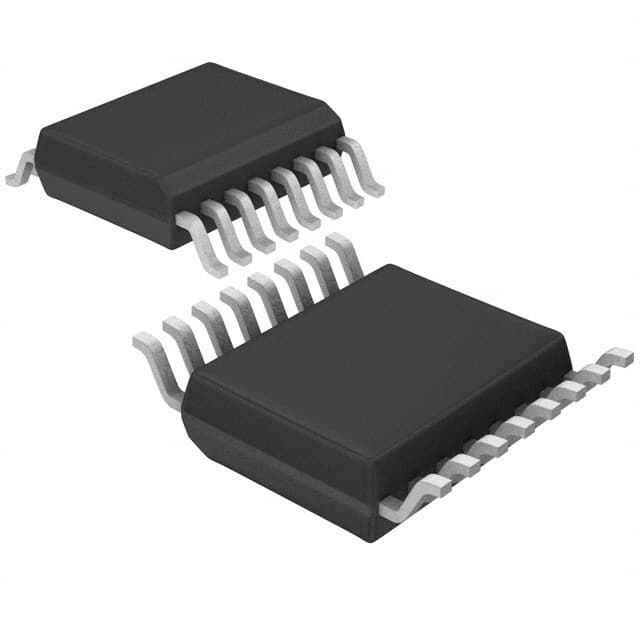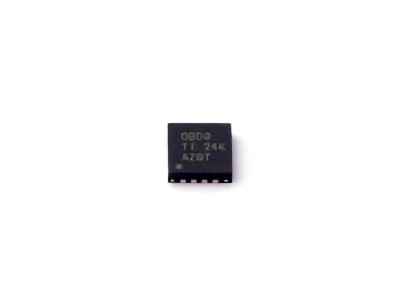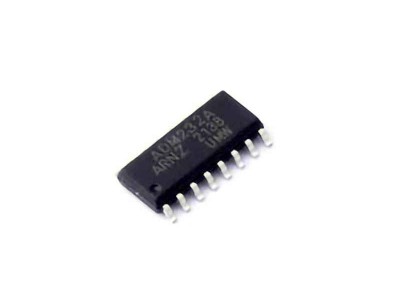
Introduction to the MLX90365LGO-ABD-000-RE Sensor
The Melexis Technologies NV MLX90365LGO-ABD-000-RE is a high-performance, Magnetic position sensor designed by Melexis. With its robustness, high resolution, and compact design, it has become widely used in automotive and industrial automation systems. This sensor is essential for precise angular and linear position measurements and is known for its reliable performance under challenging environmental conditions. However, like any complex electronic device, it can occasionally encounter issues that may compromise its function. This article will guide you through common troubleshooting steps and solutions to ensure your MLX90365LGO-ABD-000-RE sensor operates at peak performance.
Common Issues with the MLX90365LGO-ABD-000-RE Sensor
Understanding the typical problems associated with this sensor can help in diagnosing and fixing issues quickly. Here are some of the most common issues users face:
Inconsistent Signal Readings: One of the most common problems with the MLX90365LGO-ABD-000-RE sensor is inconsistent output signals. This can manifest as irregular sensor readings or a fluctuating output voltage, which can cause inaccurate position measurements.
Power Supply Issues: The sensor’s performance heavily relies on a stable power supply. Voltage fluctuations, power surges, or inadequate power supply can lead to erratic behavior and malfunction of the sensor.
Temperature-Related Problems: Extreme temperatures can impact the accuracy and reliability of the sensor’s readings. The MLX90365LGO-ABD-000-RE is designed for high performance, but temperatures outside its specified operating range can lead to degraded performance or even complete failure.
Electromagnetic Interference ( EMI ): The presence of EMI can cause interference in the signal and result in erratic data or signal loss. EMI is particularly problematic in industrial settings with numerous electrical devices that emit electromagnetic waves.
Misalignment with Magnetic Field: The MLX90365LGO-ABD-000-RE sensor relies on a magnetic field to function properly. Any misalignment between the sensor and the magnetic source can lead to signal distortion and incorrect position readings.
Troubleshooting Solutions
1. Resolving Inconsistent Signal Readings
Inconsistent output signals can occur due to several factors. To address this issue:
Check Wiring and Connections: Ensure that all wiring is securely connected, with no loose or corroded connections. Loose wiring can cause signal dropouts or inconsistent readings.
Verify Signal Filtering: Implement filtering techniques to smooth out any abrupt changes in signal voltage. Low-pass filters can help in reducing noise and ensuring more stable readings.
Inspect the Magnetic Field: Confirm that the magnetic field strength is within the specified range for optimal sensor performance. A weak or fluctuating magnetic field may cause erratic readings.
2. Addressing Power Supply Issues
Power supply problems can be resolved by:
Stabilizing the Voltage Supply: Use voltage regulators or battery management systems to ensure a consistent voltage is supplied to the sensor.
Monitoring Current Supply: Ensure that the sensor is not drawing more current than the power source can provide. Overloading the power supply can cause sudden voltage drops, leading to malfunction.
Avoiding Power Surges: Implement surge protection devices such as surge suppressors to protect the sensor from sudden spikes in voltage.
3. Managing Temperature Effects
To combat temperature-related issues:
Choose an Appropriate Enclosure: Use temperature-controlled enclosures to maintain a stable environment for the sensor.
Monitor Operating Conditions: Regularly check the temperature to ensure it stays within the sensor's operational range.
Use Thermal Compensators: Integrate thermal compensators or use materials with good thermal conductivity to mitigate the effects of temperature fluctuations.
4. Minimizing Electromagnetic Interference (EMI)
EMI can disrupt the sensor’s functioning, so it is important to:
Use Shielded Cables: Implement shielded cables to prevent external EMI from affecting the sensor's signal.
Position Sensors Appropriately: Install the sensor away from high-power devices that may emit strong electromagnetic fields.
Apply Grounding Techniques: Ensure proper grounding of all components within the system to minimize EMI and reduce noise in the signal.
5. Correcting Magnetic Field Misalignment
To address misalignment:
Ensure Proper Installation: Double-check the alignment between the sensor and the magnetic source. The sensor should be positioned in a way that it consistently receives a strong and stable magnetic field.
Use Magnetic Field Strength Meters: Regularly measure the strength of the magnetic field to confirm that it is within the acceptable range.
Adjust Sensor Placement: Fine-tune the placement of the sensor to achieve optimal alignment with the magnetic field.
Additional Troubleshooting Techniques
While the above solutions cover most common issues, there are some advanced techniques and practices that can further optimize the performance and longevity of the MLX90365LGO-ABD-000-RE sensor.
6. Conducting a Comprehensive Sensor Calibration
Proper calibration is crucial for maintaining the sensor’s accuracy. Calibration should be performed according to Melexis’ recommendations to ensure that the sensor’s output aligns with the desired specifications. This process may involve:
Adjusting Sensor Settings: Follow Melexis' guidelines to fine-tune the sensor’s settings for optimal output.
Verification with External Equipment: Use precision measurement tools to compare the sensor’s output against known standards and adjust as needed.
7. Monitoring and Diagnosing Sensor Performance Remotely
Advanced monitoring tools can provide real-time diagnostics and alert operators to potential issues before they escalate. Consider:
Integrating a Microcontroller: Use a microcontroller or similar device to monitor the sensor's output and identify any inconsistencies.
Implementing Data Logging: Regularly log sensor data for trend analysis. This data can be helpful in detecting anomalies over time, which may indicate the onset of wear or other issues.
Best Practices for Maintaining the MLX90365LGO-ABD-000-RE Sensor
To keep the MLX90365LGO-ABD-000-RE sensor operating smoothly, consider the following maintenance best practices:
Regular Inspections: Periodically inspect the sensor and its components for any signs of wear, corrosion, or damage.
Firmware Updates: If applicable, ensure that the sensor’s firmware is updated to the latest version to benefit from improved performance and bug fixes.
Protecting the Sensor from Harsh Conditions: If the sensor is used in an environment with high humidity, dust, or chemicals, make sure it is housed in a protective casing that prevents contamination.
Training Personnel: Train staff to properly handle and install the sensor. Proper handling reduces the risk of damaging the sensor during installation or maintenance.
When to Seek Professional Help
While many issues can be resolved through troubleshooting and preventive maintenance, certain situations may require expert assistance:
Persistent Performance Issues: If the sensor continues to exhibit problems after all troubleshooting steps have been performed, it may be time to seek professional diagnostics.
Sensor Replacement: When the sensor is damaged beyond repair or has reached the end of its service life, professional guidance may be necessary to select an appropriate replacement.
Conclusion
The MLX90365LGO-ABD-000-RE is an essential component in many modern systems, providing accurate and reliable position measurements. By understanding common issues and implementing practical solutions, you can ensure this sensor operates at its best. Whether it’s addressing power supply concerns, minimizing EMI, or properly aligning the sensor with its magnetic field, following these troubleshooting and maintenance tips will help maximize the sensor’s performance and longevity.
When in doubt, don’t hesitate to seek expert support or consult Melexis’ technical resources to help maintain the sensor’s functionality and efficiency.
If you're looking for models of commonly used electronic components or more information about MLX90365LGO-ABD-000-RE datasheets, compile all your procurement and CAD information in one place.
( Partnering with an electronic component supplier) sets your team up for success, ensuring that the design, production and procurement processes are streamlined and error-free. (Contact us) for free today.


